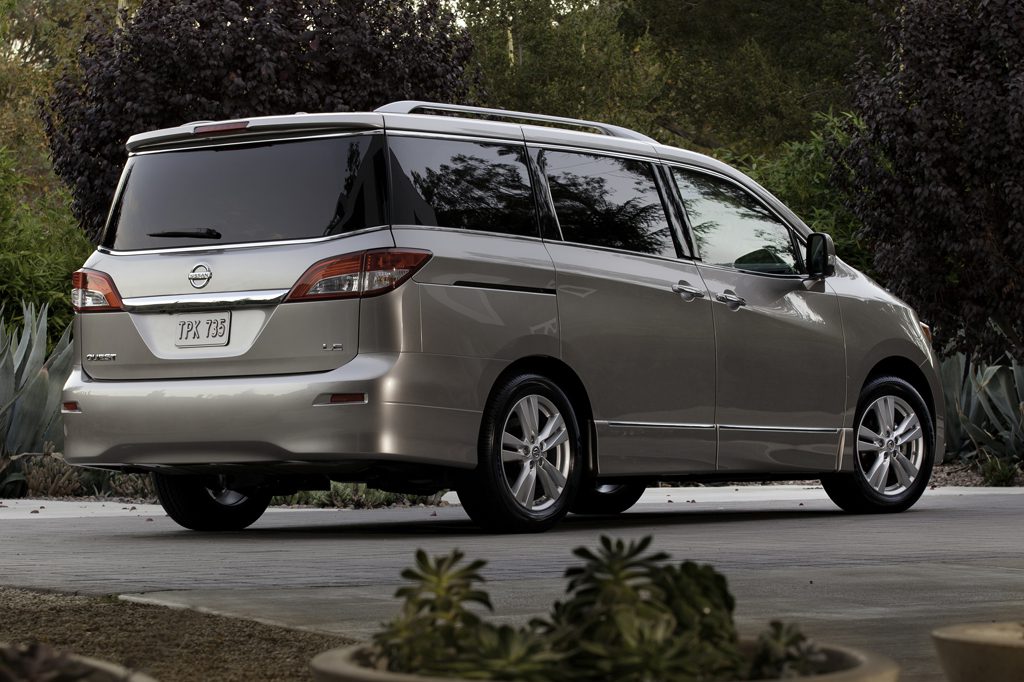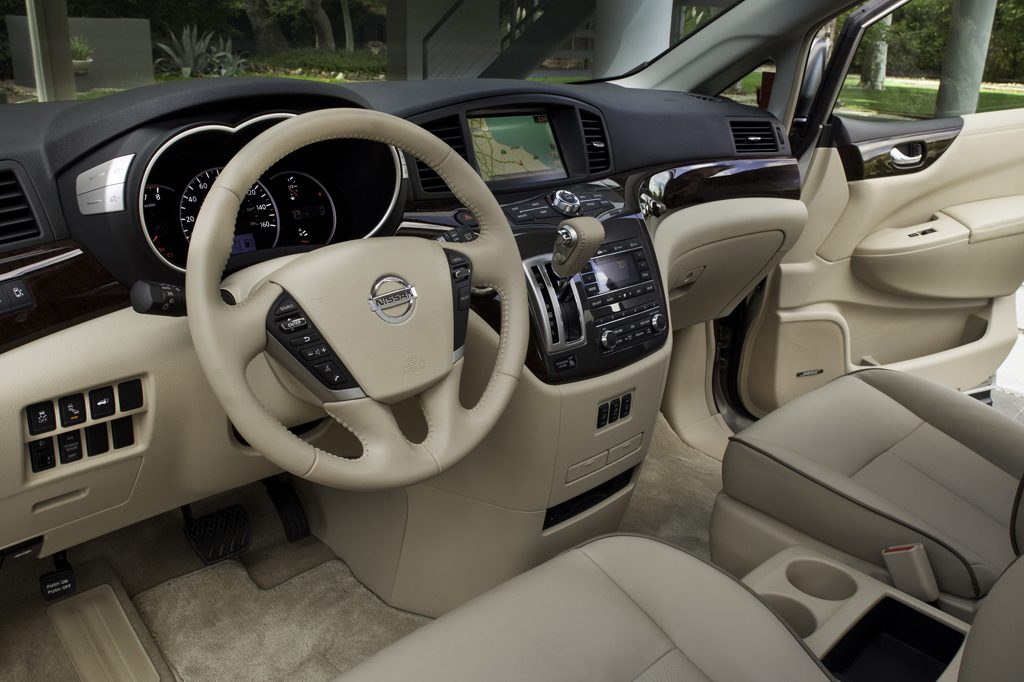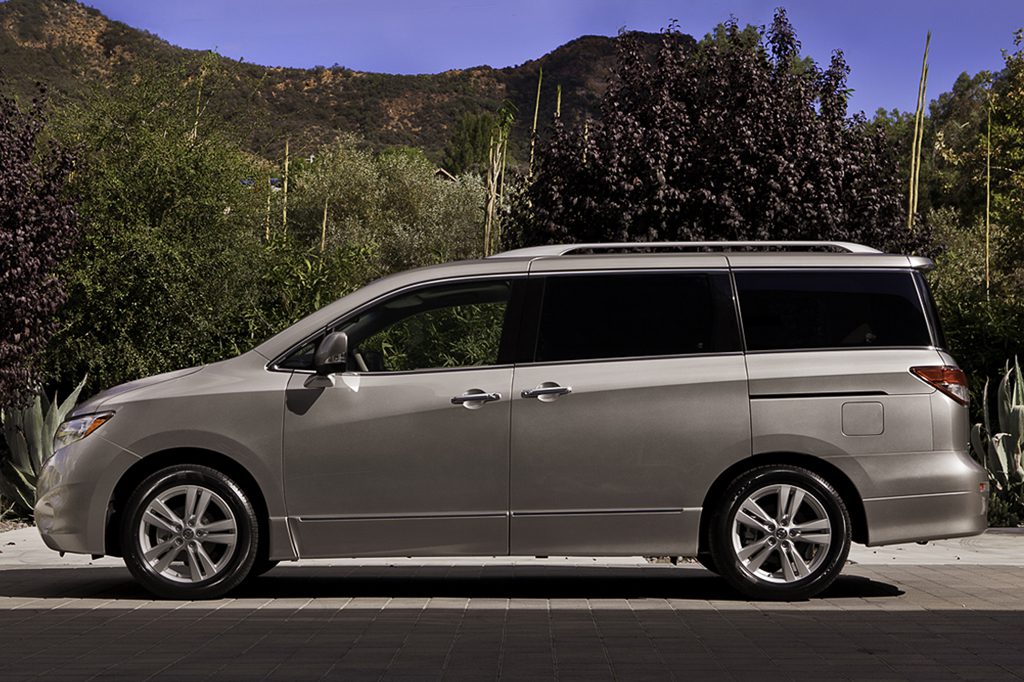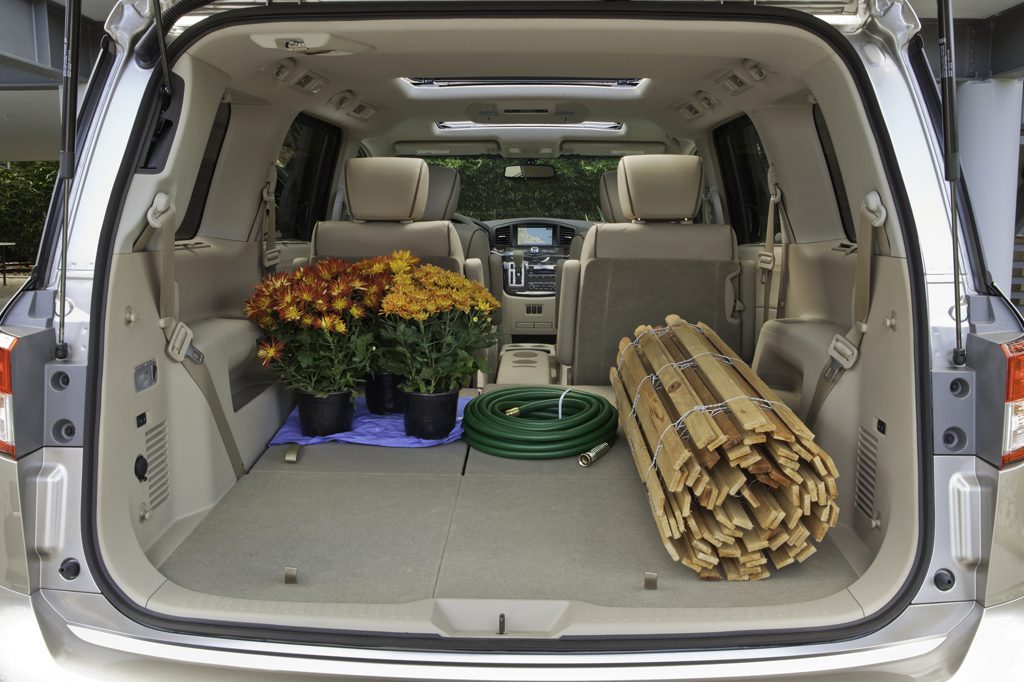| Minivan; Built in USA |
|
|
| Good condition price range: $11,100 – $30,600* |

2011 Nissan Quest Front

2011 Nissan Quest Rear

2011 Nissan Quest Interior

2011 Nissan Quest Profile

2011 Nissan Quest Interior-2
| Pros: |
|
| Cons: |
|
Model-year 2011 might be considered the year of the minivan. Redesigned products from the major players in this class meant competition has been stiff for Nissan’s new Quest. A strong engine, inviting interior, and easy controls are Quest strong points. However, fewer optional comfort and convenience features and less cargo and passenger flexibility than most rivals make it fall a bit short of the class-leading Chrysler and Honda minivans.
Overview
After skipping model-year 2010, the Nissan Quest returned as a redesigned 2011 model. The minivan borrowed elements of its design from the Nissan Murano midsize SUV. Quest was available in four models: base S, SV, SL, and top-line LE. All used a 260-horsepower, 3.5-liter V6 engine and a continuously variable transmission (CVT) that behaves much like an automatic. Seven-passenger seating was standard: The second-row bucket seats and third-row bench seat could fold forward, leaving a permanent underfloor storage well behind the third row. Standard safety features included all-disc antilock braking, traction control, an antiskid system, front side airbags, and curtain side airbags. Pushbutton start was standard on all models. So was the Easy Fill Tire Alert System, which flashed the exterior lights during tire inflation and sounded the horn when the tire reached the recommended pressure. One-touch power-sliding doors and a rearview camera were standard on all except the S model. Other available features included blind-spot alert, a dual-panel sunroof, one-touch power liftgate, DVD entertainment with 11-inch screen, wireless cell-phone link, and a navigation system. Minivan rivals included the Dodge Grand Caravan, Honda Odyssey, and Toyota Sienna.
Yearly Updates
| 2012 Quest XM Satellite Radio became standard in the SL model. Otherwise, the 2012 Nissan Quest was largely unchanged. |
| 2013 Quest The 2013 Nissan Quest saw no major changes. The top-line LE model gained an around-view camera as a new standard feature, and the SV model was now available with DVD entertainment as an option. Base prices were lower on all but the LE. |
| 2014 Quest Quest’s only changes for 2014 were related to paint colors. Titanium and Gun Metallic were new this year, but previously available colors Twilight Gray, Platinum Graphite, and Titanium Beige were discontinued. |
